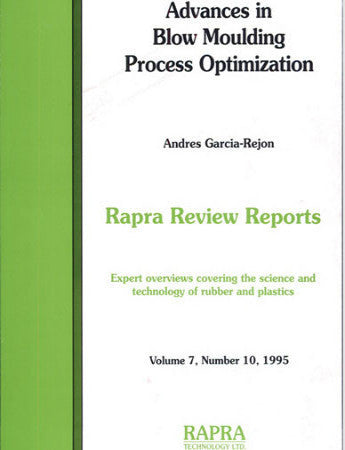Mould Sticking, Fouling and Cleaning
A large number of objects produced from polymers are moulded. One of the main problems of moulding with polymers is the fact that the articles produced often stick in the mould. An associated problem is that of mould fouling where deposits from previous items stick to the surface of the mould and these in turn cause blemishes on the next product.
Mould release and mould fouling have serious implications to the polymer industry in terms of limiting the production rate and in an industry where ‘time is money’ this can represent a significant cost to that industry.
This review first discusses mould release and then addresses mould fouling. Significant material and process variables are considered first and then practical guidance on the selection of release agents and surface treatments are addressed. This is followed by advice on mould cleaning and the assessment of mould sticking and mould fouling.
This review report should be of interest to anyone involved in the moulding of polymers and to anyone who is about to take their first steps into this area.
Mould release and mould fouling have serious implications to the polymer industry in terms of limiting the production rate and in an industry where ‘time is money’ this can represent a significant cost to that industry.
This review first discusses mould release and then addresses mould fouling. Significant material and process variables are considered first and then practical guidance on the selection of release agents and surface treatments are addressed. This is followed by advice on mould cleaning and the assessment of mould sticking and mould fouling.
This review report should be of interest to anyone involved in the moulding of polymers and to anyone who is about to take their first steps into this area.
1. Introduction
2. The Underlying Causes of Mould Sticking and Fouling
2.1 Contact and Adhesion
2.2 Fundamental and Practical Adhesion
2.3 Failure Energy
2.4 Surface Activity and Incompatibility
2.5 Summary of the Underlying Causes
3. Investigations into Mould Release and Fouling
3.1 Systematic Studies of Mould Release
3.1.1 Early Work on Release of Rubbers
3.1.2 Release of Model Polyurethane Rubber
3.1.3 Internal Release Agents
3.1.4 Emulsion Polymerised Nitrile Rubber
3.1.5 Mould Release: Other Studies
3.2 Systematic Studies of Mould Fouling
3.2.1 Early Work on Fouling of Rubber Moulds
3.2.2 Filled Nitrile Rubber 3.2.3 Japanese Work
3.2.4 Mould Fouling: Other Studies
3.3 Mould Release and Fouling – General Discussion
3.3.1 Mould Release Agents
4. Practical Aspects of Mould Release and Fouling
4.1 Surface Treatment of Moulds
4.1.1 Hardening Treatments
4.1.2 Ion Implantation
4.2 Practical Aspects: Selection of Release Agents
4.3 Cleaning
4.4 Assessment of Release and Fouling Behaviour
5. Conclusions
2. The Underlying Causes of Mould Sticking and Fouling
2.1 Contact and Adhesion
2.2 Fundamental and Practical Adhesion
2.3 Failure Energy
2.4 Surface Activity and Incompatibility
2.5 Summary of the Underlying Causes
3. Investigations into Mould Release and Fouling
3.1 Systematic Studies of Mould Release
3.1.1 Early Work on Release of Rubbers
3.1.2 Release of Model Polyurethane Rubber
3.1.3 Internal Release Agents
3.1.4 Emulsion Polymerised Nitrile Rubber
3.1.5 Mould Release: Other Studies
3.2 Systematic Studies of Mould Fouling
3.2.1 Early Work on Fouling of Rubber Moulds
3.2.2 Filled Nitrile Rubber 3.2.3 Japanese Work
3.2.4 Mould Fouling: Other Studies
3.3 Mould Release and Fouling – General Discussion
3.3.1 Mould Release Agents
4. Practical Aspects of Mould Release and Fouling
4.1 Surface Treatment of Moulds
4.1.1 Hardening Treatments
4.1.2 Ion Implantation
4.2 Practical Aspects: Selection of Release Agents
4.3 Cleaning
4.4 Assessment of Release and Fouling Behaviour
5. Conclusions
David Packham is Senior Lecturer in Materials Science at the University of Bath. He has a BSc from the University of Durham and a Ph.D. from the City University, London; both are in chemistry. After industrial research with Van Leer, he moved to Bath where his research includes polymer/metal adhesion, crosslink structure and properties of rubber, the nature of university education and the public understanding of science. He is an author of over a hundred publications in these areas. He is a member of the Royal Society of Chemistry and of the Institute of Materials.




